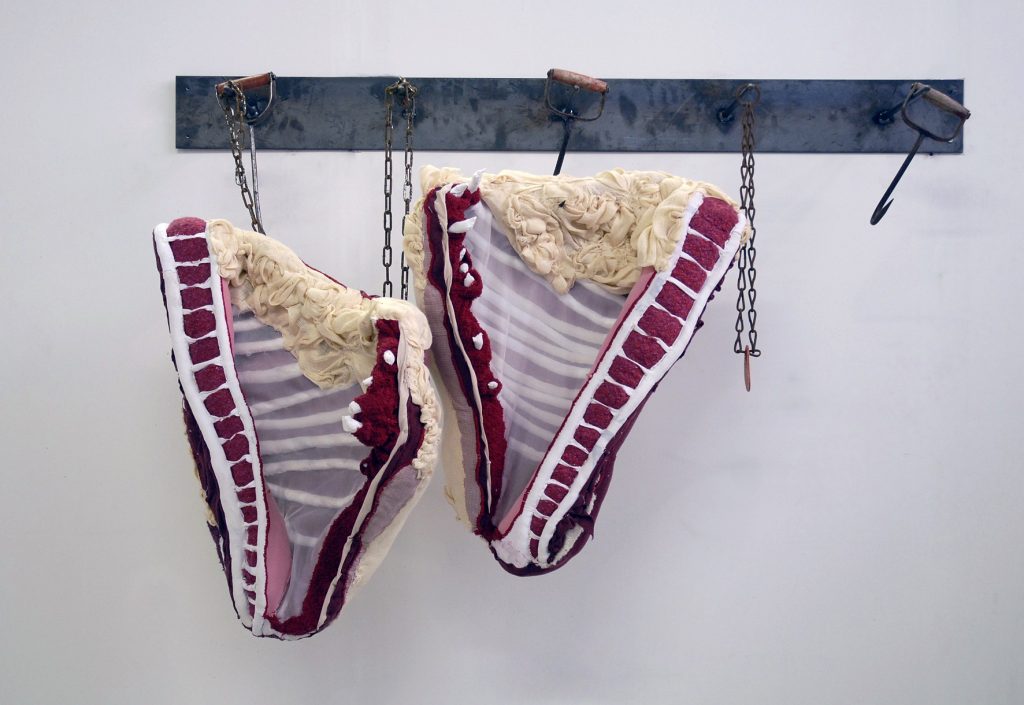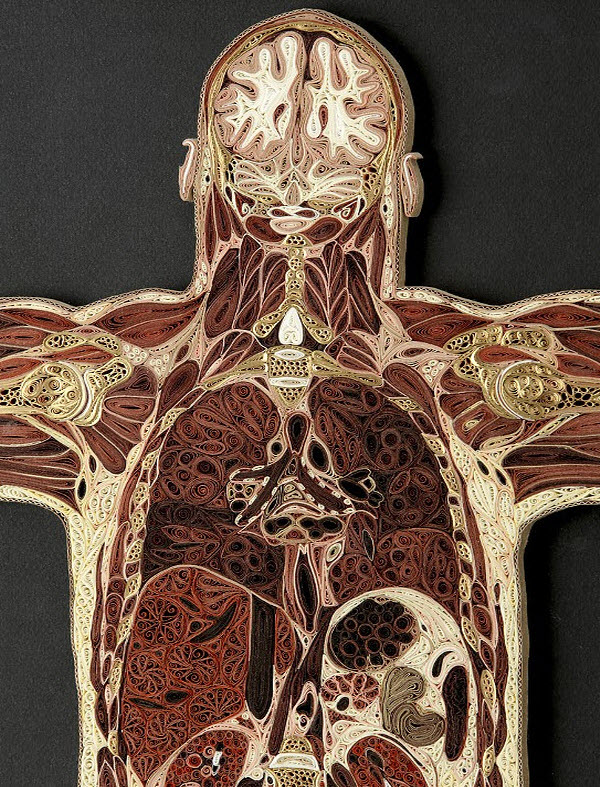In: anatomical cross sections

TAMARA KOSTIANOVSKY | ACTUS REUS
June 17, 2022Tamara Kostianovsky | Actus Reus
I am afraid the good woman did not realize how difficult it is to cut up a body, never having done so herself. (Margaret Atwood, Alias Grace)
To the Puritan all things are impure, as somebody says. (D.H. Lawrence, Sketches of Etruscan Places)
Tamara Kostianovsky’s artworks are disquieting; that is meant as praise. What her sculptures in the body of work titled Actus Reus – both specific elements and the larger installations of multiple components – do is allude, and we do the rest. What we initially ‘think’ we’re looking at is not at all what we’re truly observing. An initial revulsion turns to seduction, and we find ourselves drawn in by both the formal attraction as well as the conceptual fracture that only makes her work more enticing.
It’s almost appropriate, then, that one of the works that comprises Actus Reus is titled Abnegation (which means “the act of renouncing or rejecting something”); or that the name of the series itself is a ‘criminal’ legal term. Actus Reus is “sometimes called the external element or the objective element of a crime….the Latin term for the “guilty act” which, when proved beyond a reasonable doubt in combination with the mens rea, “guilty mind”, produces criminal liability in the common law−based criminal law jurisdictions of numerous countries….” There is almost a culpability in our own interactions with these artworks…..
Other works in this series – What It Once Was (2011), One and a Half (2008), Bound (2008), Venus (2011), Elegy (2009) – all leave the viewer feeling as though they’re looking upon – and enjoying gazing upon, devouring with their eyes – something that is forbidden, not meant to be seen, and definitely not be enjoyed, as though illicitly consuming visual pleasure from them….
Before I delve further into my interpretations of Kostianovsky’s work, her statement is as follows: The discovery of a world concealed behind the skin took form in my adolescence while working at a surgeon’s office, where veins exploded into waterfalls, cut ligaments set free the muscles they once contained, and chunks of fat poured over tissues of various colors and textures. A fascination with these encounters put the body at the center of my work, allowing me to use this imagery to reflect on consumption, ecology, and the voracious needs of the body.
Read more of Bart Gazzola’s thoughts on this work here.
Read More
The Tissue Series | Lisa Nilsson
May 7, 2022The Tissue Series | Lisa Nilsson
Everything that has beauty has a body, and is a body;
everything that has being has being in the flesh:
and dreams are only drawn from the bodies that are.
(D. H. Lawrence)
Lisa Nilsson’s works are immediately visceral. But when you learn how they’re assembled, that bodily aesthetic, suggesting a wetness, a moistness, if you will, suddenly becomes dry and almost antiseptic.
This image is from her series of Anatomical Cross-Sections in Paper, and the artist offers the following about them and her process: These pieces are made of Japanese mulberry paper and the gilded edges of old books. They are constructed by a technique of rolling and shaping narrow strips of paper called quilling or paper filigree. Quilling was first practiced by Renaissance nuns and monks who are said to have made artistic use of the gilded edges of worn out bibles, and later by 18th century ladies who made artistic use of lots of free time. I find quilling exquisitely satisfying for rendering the densely squished and lovely internal landscape of the human body in cross section.
It’s interesting to consider the reference to bibles here – a tome that has much to say about the body and it’s ‘regulation’ (I’m old enough to remember the NEA ‘controversy’ when Mapplethorpe and Serrano were demonized by the Republican Helms, and how Lucy Lippard cast that in terms of adversarial religious dogma regarding interpolations of the body. Both artists mentioned here self identify as catholic and the late and unlamented Jesse Helms – their most bilious attacker – was a rabid evangelical). How the body is to be ‘regulated’ is also a fiery topic in the United States, right now….
I’m also reminded of the intersection between science and art, in terms of medical illustration, and an exchange from Katherine Dunn’s excellent novel Geek Love:
“What made you,” clearing my throat, “decide to be an artist?”
Her eyes flick at my feet under frowning brows. “No, no. A medical illustrator. For textbooks and manuals … ” Her tongue sneaks out at a corner of her mouth as she slaps stroke after vicious stroke onto the defenseless page. “See, photographs can be confusing. A drawing can be more specific and informative. It gets pretty red in there. Pretty hot and thick.”
More of Lisa Nilsson’s Tissue Series can be enjoyed here. Her work is meticulous and enthralling – like a bloodless autopsy.
All photographs here are by John Polak. ~ Bart Gazzola
Read More
Recent Comments